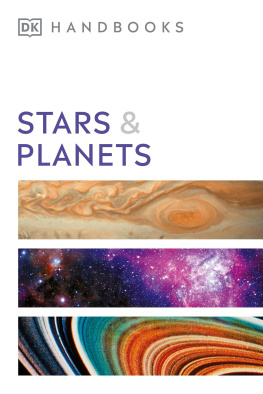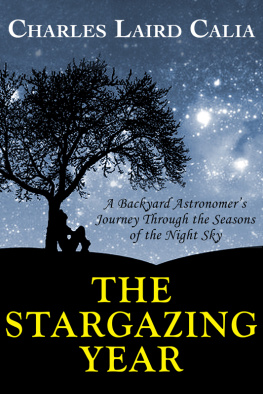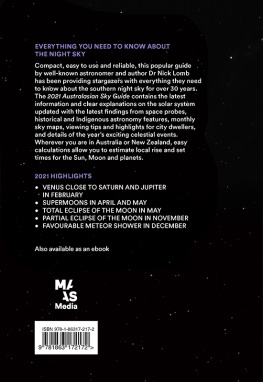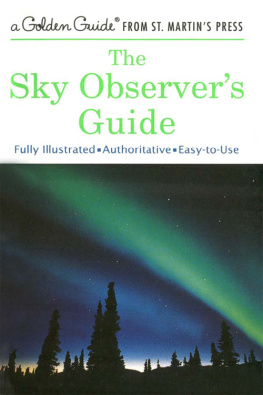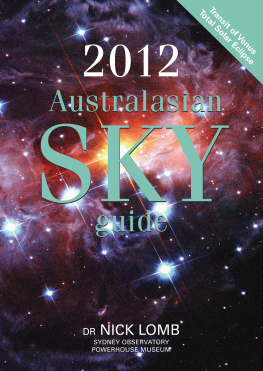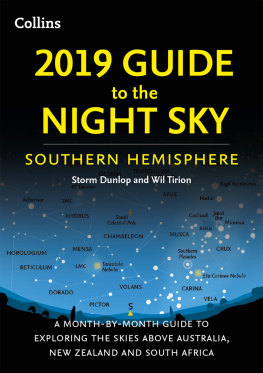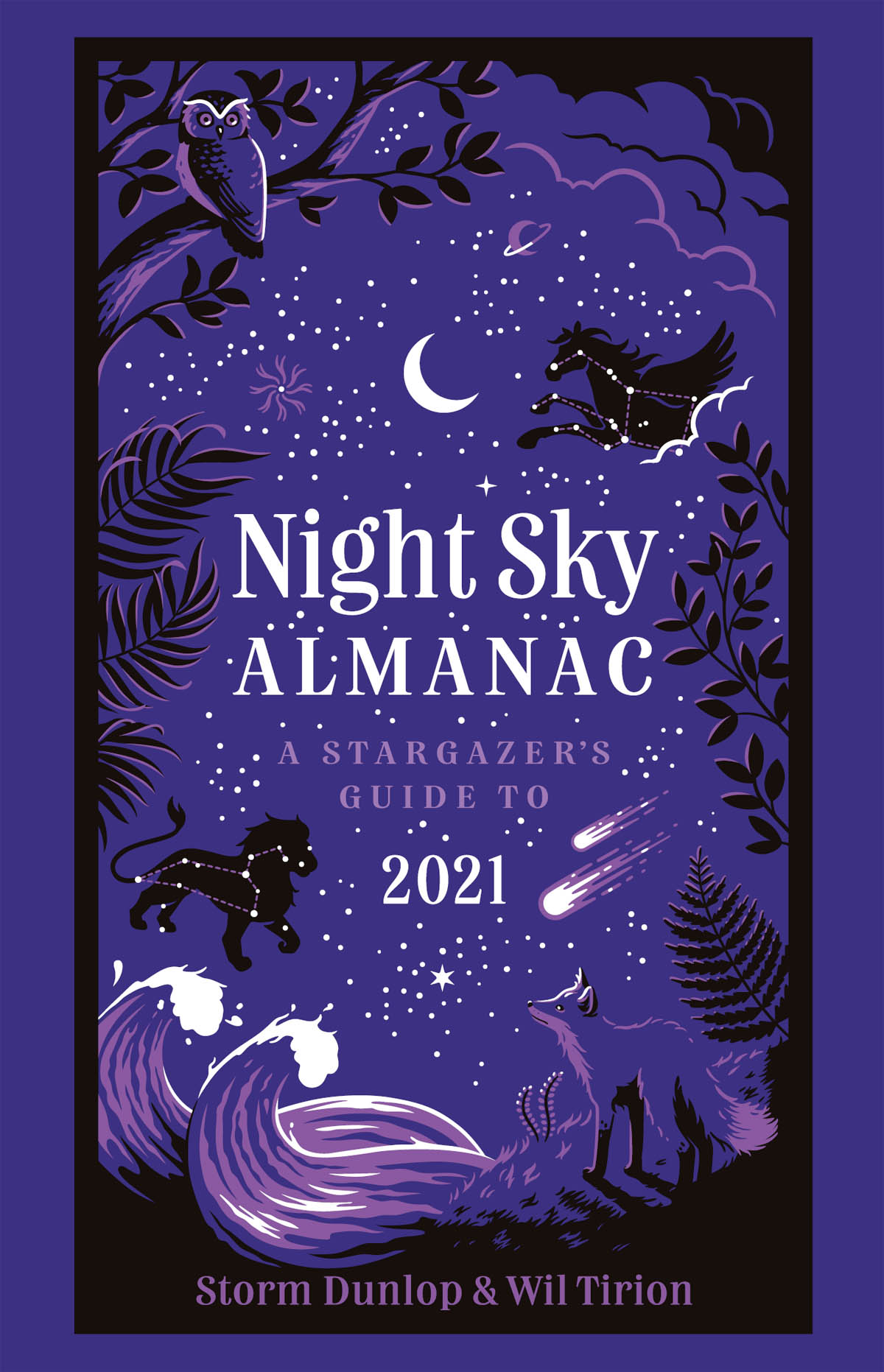Contents
Guide
Published by Collins
An imprint of HarperCollins Publishers
Westerhill Road
Bishopbriggs
Glasgow G64 2QT
www.harpercollins.co.uk
In association with
Royal Museums Greenwich, the group name for the National Maritime Museum,
Royal Observatory Greenwich, Queens House and Cutty Sark
www.rmg.co.uk
HarperCollins Publishers 2020
Text and illustrations Storm Dunlop and Wil Tirion
Cover illustrations Julia Murray
Images and illustrations see acknowledgements
Collins is a registered trademark of HarperCollins Publishers Ltd
All rights reserved under International and Pan-American Copyright Conventions. By payment of the required fees, you have been granted the non-exclusive, non-transferable right to access and read the text of this e-book on screen. No part of this text may be reproduced, transmitted, downloaded, decompiled, reverse engineered, or stored in or introduced into any information storage and retrieval system, in any form or by any means, whether electronic or mechanical, now known or hereafter invented, without the express written permission of HarperCollins.
The contents of this publication are believed correct at the time of printing. Nevertheless the publisher can accept no responsibility for errors or omissions, changes in the detail given or for any expense or loss thereby caused.
HarperCollins does not warrant that any website mentioned in this title will be provided uninterrupted, that any website will be error free, that defects will be corrected, or that the website or the server that makes it available are free of viruses or bugs. For full terms and conditions please refer to the site terms provided on the website.
A catalogue record for this book is available from the British Library
eBook Edition October 2020
ISBN 9780008403614
Version: 2020-09-11
Contents
For thousands of generations, your ancestors have marvelled at the night sky above them. They pondered its meaning and distance, tracing patterns and telling stories with the stars; they watched with great interest as the Moon and a handful of bright, wandering lights traversed the sky independently; sometimes they looked on in awe as a new visitor drifted above, with a long tail in tow; at other times they stayed up, alert, as stars appeared to streak across the sky with alarming speed; perhaps they cowered in fear when, on rare occasions, the Moon turned blood red or challenged the daylight by taking a bite from the Sun.
Gradually, superstition gave way to understanding. Comprehension of the night skys cyclical nature proved foundational to an inevitable agricultural revolution, which propelled the progress of civilisation forward, forever cementing astronomys influence on our lives. The stars have also permeated into our wider cultural heritage, appearing in religious texts and great works of art visual, poetic and musical. The Moon, our unfailing celestial companion, altered the course of life on Earth through its mastery of the tides, and has since become a frontier of exploration for our species a stepping stone towards our spacefaring future. It is remarkable how far we have come since humans first turned their attention to the stars over 50,000 years ago.
Today, our lives are very different from theirs, but the curiosity driving the earliest stargazers has not left us. It has only become muffled by the increasing intrusion of artificial light pollution that has brightened our skies. The stars, planets and Moon still play overhead as they always have, and each year many annual meteor showers and other events go underappreciated as fewer of us enjoy regular access to the night sky. Yet, with only a little guidance you can rekindle this deeply ingrained fascination and, armed with the extensive knowledge of the modern astronomical age, explore the universe we call home.
This Almanac invites you to reconnect with your ancestral stargazing roots, by following the progress of the constellations throughout the seasons. With the aid of its monthly calendars and maps, you will chart the rhythm of the lunar phases, discover events that light up the sky for brief periods, and explore the rich tapestry of characters that adorn the starry canvas overhead. You can delve as deeply as you like, or follow your own favourite subject throughout the year. The treasures of the night sky will be waiting for you.
Tom Kerss
The aim of this book is to help people to find their way around the night sky and to understand what is visible every month, from anywhere in the world. The stars that may be seen depend on where you are on Earth, but even if you travel widely, this book will show you what you can see. The night sky also changes from month to month and these changes, together with some of the significant events that occur during the year are described and illustrated.
The charts that are used differ considerably from those found in most astronomy books, and have been specifically designed for use anywhere in the world. A full description of how to use and understand the monthly charts is given .
Sunrise, sunset and twilight
The conditions for observing naturally vary over the course of the year and ones location on Earth. Sunrise and sunset vary considerably, depending in particular on ones latitude. Sunrise and sunset times are given each month for nine different locations around the world. These places are shown in a bold typeface on the world map show how this varies for the nine locations, which have been chosen to show the range of variation, rather than just for the importance of the places that have been included. The different stages of twilight and how they affect observing are also explained there.
Moonlight
Yet another factor that affects the visibility of objects is the amount of moonlight in the sky. At Full Moon, it may be very difficult to see some of the fainter stars and objects, and even when the Moon is at a smaller phase it seriously interferes with visibility if it is near the stars or planets in which you are interested. A full lunar calendar is given for each month and may be used to see when nights are likely to be darkest and best for observing.
The celestial sphere
All the objects in the sky (including the Sun, Moon, and stars) appear to lie at some indeterminate distance on a large sphere, centred on the Earth. This celestial sphere has various reference points and features that are related to those of the Earth. If the Earths rotational axis is extended, for example, it points to the North and South Celestial Poles, which are thus in line with the North and South Poles on Earth. As shown in the diagrams, the altitude of the celestial pole is equal to the observers latitude, whether in the north or south. Similarly, the celestial equator lies in the same plane as the Earths equator, and divides the sky into northern and southern hemispheres.

The altitude of the Celestial Pole equals the observers latitude.
It is useful to know some of the special terms for various parts of the sky. As seen by an observer, half of the celestial sphere is invisible, below the horizon. The point directly overhead is known as the zenith, and this point is shown on the monthly charts for several different latitudes, where it is an important reference point. The (invisible) point below ones feet is the



